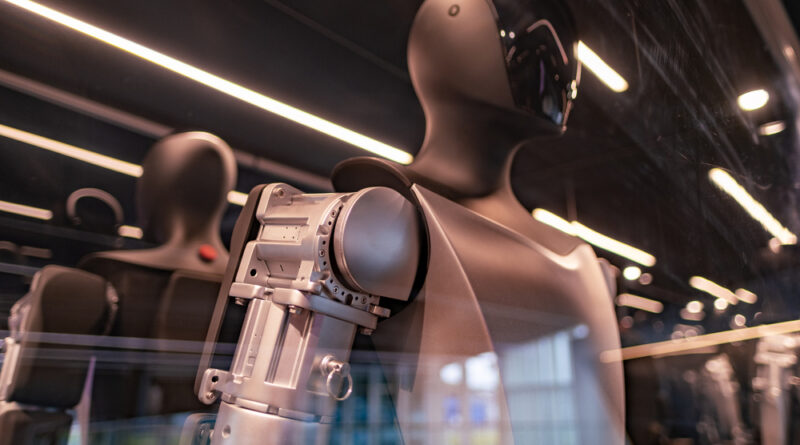Beyond Recognition: How “Physical AI” Is Teaching Machines to Make Sense of the Real World
For most of AI’s brief but meteoric history, “seeing” has been its super-power. Convolutional networks can spot a cat faster than you can blink, and modern vision models label objects with super-human accuracy. Yet the moment you ask a system why someone is pacing nervously near a fence—or what might happen next if a forklift reverses too quickly—those certainties evaporate.
A new movement aims to close that gap. Dubbed physical AI, it seeks to give machines a working grasp of the laws of motion, cause and effect, and human intent—turning passive cameras into proactive sentinels that understand, predict and even prevent real-world events.
From Pixels to Physics
The phrase “physical AI” caught fire after Nvidia CEO Jensen Huang described the next wave of intelligence as “AI that understands the laws of physics.” Where traditional computer vision stops at object detection, physical AI merges vision with physics simulation and machine learning so machines can reason about interaction—how a door swings open, how a liquid spills, how body language signals danger.
At its simplest, the technology tackles an everyday surveillance problem: too many cameras, too little insight. In a bustling hotel, 300 live feeds pour into a security hub where a single guard struggles to notice the one guest who leaves a cocktail unguarded. Physical AI promises to flag that risk in real time.
A Startup’s Testbed
Israeli-American startup Lumana offers a glimpse of the technology’s potential. Backed by Norwest Venture Partners, Lumana began as a video-analytics outfit and has pivoted hard into context-aware monitoring:
-
Predictive alerting: In a pilot at a nightlife venue, the system detected “aggressive proximity” between two patrons hovering over unattended drinks. Security intervened before an assault escalated.
-
Food-safety compliance: Cameras in an industrial kitchen flagged workers who skipped hand-washing, handled raw chicken without gloves and left perishables unrefrigerated—infractions that conventional object detection would miss.
“We’re teaching cameras to act like intelligent sensors,” CEO Sagi Ben-Moshe explains. “It’s not enough to say, ‘There’s a person and a drink.’ The system needs to reason: ‘That posture looks predatory; intervene now.’”
The Broader Wave
Lumana isn’t alone.
-
Hakimo trains models to spot loitering, vandalism and medical emergencies in corporate campuses.
-
Meta’s V-JEPA 2 vision model predicts physical outcomes frame by frame, a foundation researchers claim will help AI “plan and act” in the real world.
-
Nvidia’s Isaac Sim lets virtual robots learn gravity, friction and collisions before they ever touch hardware—an embodied twin of physical AI’s theory.
Investors see dollar signs wherever cameras already roll: retail loss prevention, factory safety, warehouse logistics, public-space monitoring.
Trust Is the Hard Part
Powerful as it is, physical AI arrives with baggage:
-
False positives: Mistaken alerts can shut down production lines or falsely incriminate patrons.
-
Privacy creep: Real-time behavioral prediction looks uncomfortably like mass surveillance if left unchecked.
-
Black-box ethics: Operators need auditable logs that explain why the system flagged an incident.
Ben-Moshe says Lumana tackles these worries with tiered alerts, opt-in transparency and edge processing that anonymizes faces unless escalation is required. Yet the larger industry must still grapple with regulations such as the EU AI Act and pending U.S. legislation on real-time biometric monitoring.
Market on the Brink
So why the rush? Because the ROI is beginning to speak for itself. Retailers cite shrinkage reductions; manufacturers tout fewer OSHA fines; city councils eye crime deterrence without ballooning headcounts. Crucially, vendors like Lumana overlay software on existing camera networks—dodging the costly “rip-and-replace” barrier that slowed earlier analytics waves.
Norwest general partner Dror Nahumi frames it bluntly: “A guard staring at twelve screens can’t process every micro-gesture. Physical AI can—and it never blinks.”
The Road Ahead
Picture a near future in which:
-
Smart warehouses anticipate forklift collisions and reroute traffic automatically.
-
Stadium security predicts crowd surges before the mosh pit forms.
-
Elder-care cameras detect pre-fall gait changes and call nurses preemptively.
These scenarios hinge on systems that are accurate, explainable and socially acceptable. Get the balance right, and physical AI becomes an invisible safety net; get it wrong, and it turns into Orwellian overreach.
The next chapter of AI, then, isn’t about prettier images or wittier chatbots. It’s about grounding intelligence in the messy physics of our daily lives—teaching machines not just to see, but to understand. If its champions deliver, the era of cameras that merely record could soon give way to sensors that think, act and, ideally, keep us safer than we’ve ever been.
Photo Credit: DepositPhotos.com

